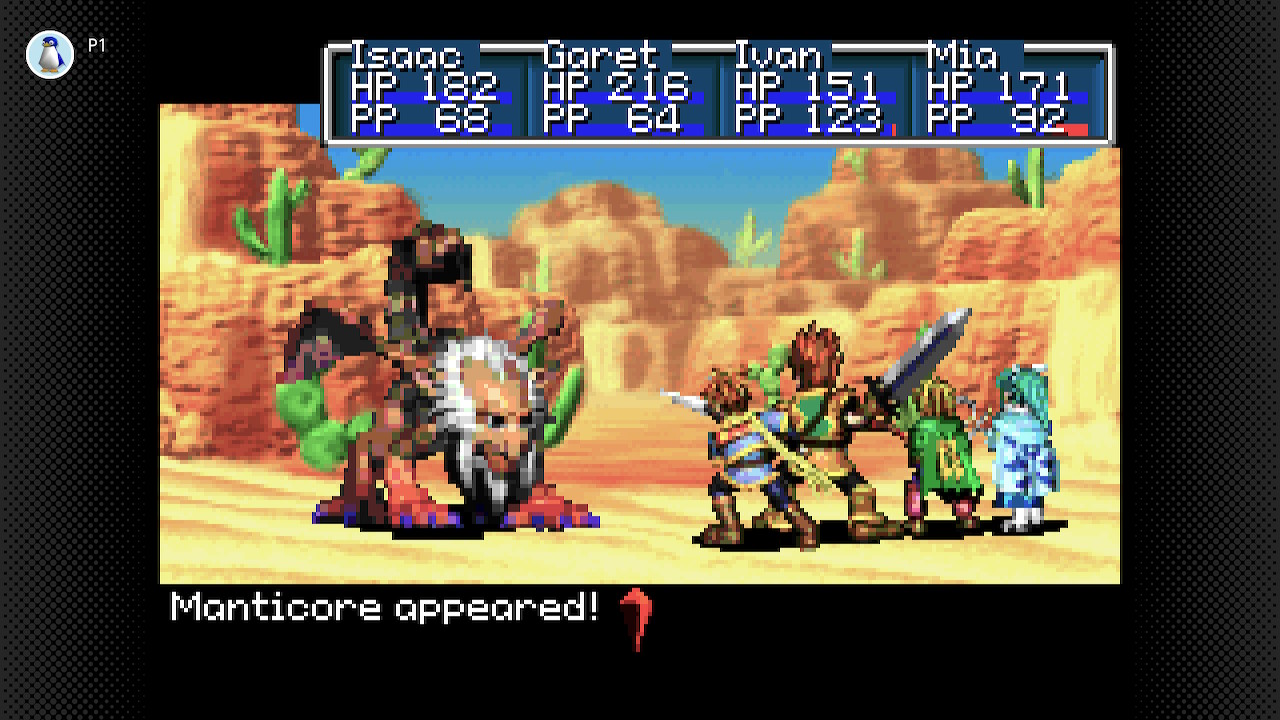Many years ago, so long ago that my Gaming Diary didn’t even exist, I played Golden Sun on my Game Boy Advance. It was great. At least, I remember it being great, but I remember very little about the actual events in the game. I recall the catastrophe at the start, and the village you’re in, and that your friend goes missing and it turns out later on he’s working with (under duress) the bad guys. I remember there was a lighthouse. And I remember the djinn – sort of like little dragons – you can find and add to your character to buff your stats, give you new moves, and unleash on baddies. Mainly I remember them because they were in Shining The Holy Ark on the Sega Saturn though, not that they were in Golden Sun.

With very little remembered of the game, it was almost like playing an entirely new Camelot RPG just with the odd sensation that it was all a bit familiar. But being able to replay a great RPG, especially one from the likes of Camelot (who were the late 90s/early 2000s kings of the genre) without knowing everything is a Fine Thing Indeed.
Off I went then, with my guy Isaac and his chums, through the usual overworlds and dungeons and towns and, yes, lighthouses (there are two, or three, sort of) fighting random battles and watching the numbers go up as a charming story unfolds.
Being a GBA game with really detailed 32 bit sprite graphics (with loads of Mode-7 type backgrounds and maps), it looks amazing on a tiny handheld screen but blown up to fifty imperial inches it feels really messy. Older games, like those on the SNES and earlier, seem to come out OK at that size, probably due to less cluttered backgrounds and more obvious sprite edge definition, but here there are too many colours and too few pixels and it becomes hard to see what things are. Until, for some reason, it doesn’t. I struggled for a while, trying the (limited) screen rendering options, but got used to it and actually, it’s fine.

I don’t remember how hard the game was when I played it before, but I found it very easy this time through. Well, in terms of the actual fights and so on, anyway. Perhaps it’s because I did plenty of levelling up, or maybe I was just cautious, or I completed most of the side quests or something. The final boss battle was a walkover. What was difficult, however, was knowing what to do next. Even chatting to everyone in the towns (as is de rigour for JRPGs) didn’t always make it clear where I was supposed to go next, at least in terms of direction. I was nudged towards a new town or dungeon via the dialogue, but very rarely was it made clear where I might find such a place, so much wandering ensued. Perhaps another reason why I levelled up a lot, I suppose.
What I’d also forgotten about the game is how it ends. Because, well, it sort of doesn’t. You beat the boss, there’s an event, and then it’s straight into the sequel to actually finish off the story. Only two of the four lighthouses the game tells you need to be (or shouldn’t be, depending who you ask) lighting are in Golden Sun. A bit of an anti-climax and seemingly hurried end, if you were not aware of the follow-up title, Golden Sun: The Lost Age. Which, luckily, appeared on the Switch Game Boy Advance service at the same time as Golden Sun. Phew, eh?


